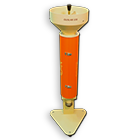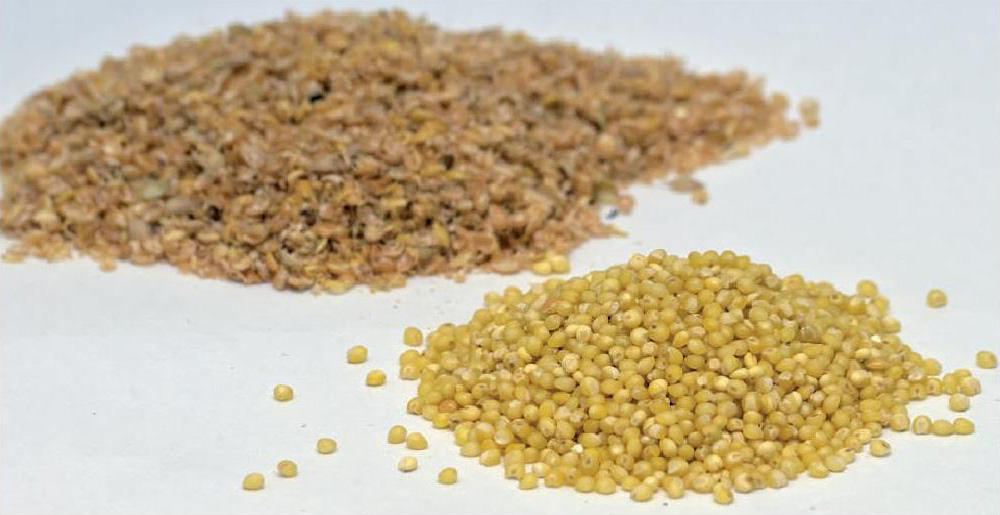Cereals are a product used in the production of bread, bakery products and cereals. In addition, they are used to produce concentrated and coarse fodder, which is used in animal husbandry. It is not surprising that a significant part of agricultural land is allocated to grain crops. The greater the yield, the more fodder, food and technical needs can be covered by the state. To protect themselves from low yields, which occur under unfavourable climatic conditions, farmers sow the available agricultural land with different types of grains.
Types of cereal crops
Cereal crops are understood as plants that man cultivates for the sake of obtaining grain. According to scientific research, this began to be done in ancient times. For example, if rice began to grow in the III millennium BC, wheat – as early as VII millennium BC. Even then, grains were known for their nutritional value. Now scientists have found out that they contain proteins, carbohydrates, vitamins, provitamins and enzymes.
There are several types of cereal crops:
- cereals – a group that includes bread varieties of plants (wheat, oats, barley, rye, corn, rice, millet, rapeseed);
- legumes (peas, beans, soya beans);
- buckwheat (buckwheat).
Unlike fruit and vegetables, cereal crops do not require greenhouse conditions. This simplifies the process of field management, saves material, labour and time resources.
Winter wheat
Winter wheat is a cereal crop that is characterised by its grain nutritional value and yield. It also tolerates seasonal low temperatures well, which distinguishes it from spring wheat. Despite the fact that it is an annual plant, it is the one most often planted by farmers.
As a rule, winter wheat is sown in the last days of summer or early autumn. In November it already produces its first sprouts, and its vegetation lasts from winter to the first weeks of spring. Compared to spring crops, the harvest is much earlier.
Every year new technologies of winter wheat breeding are introduced and improved. This has made it possible to identify several varieties that have spread throughout the world’s farms. Among them:
- ‘Favourite’. The variety is characterised by softness and resistance to frost, but low resistance to drought. From 1 hectare of field it is possible to collect 96-107 kg of grain.
- ‘Antonovka’. The distinction of this variety is a high rate of ripening. His vegetation period lasts a maximum of 285 days. At the same time, it gives a good harvest under any conditions, regardless of the level of humidity and temperature.
- ‘Shestopalovka’. This variety is characterised by unpretentiousness, resistance to low humidity, frost, infections, lodging and overripening. From 1 hectare of the field farmers collect up to 8.5 centners of grain.
How much of the final product is left in the end does not depend on the yield. After harvesting, the grains are cleaned. Farmers process them with modern equipment that helps reduce waste.
Barley
Barley is a plant that comes in annual, biennial and perennial. In the conditions of our country, farmers cultivate both spring and winter crops. However, preference is given to winter barley. As a rule, it matures faster, which allows for an earlier harvest and the use of cleared fields for planting another crop. In this way, farmers harvest twice a year. To get even more of the end product without increasing production costs, they use machinery in the fields that carries out post-harvest processing of the grains.
Barley is a grain crop that does not tolerate low temperatures well. Sudden frosts can cause complete destruction of the crop. But barley is characterised by resistance to low humidity and heat, so it is usually cultivated in southern regions. In this case, the following varieties are used:
- ‘Vakula’. Under the condition of abundant irrigation, the variety allows you to get up to 90 kg of grain from 1 hectare of agricultural area.
- ‘Viscount’. Fodder barley used in the production of mixed fodder and fodder mixtures for livestock, as well as in brewing (subject to appropriate care). From 1 hectare of the field farmers get up to 70 centners of grain.
- ‘Priazovsky’. Spring barley, which well tolerates low humidity, as well as pests, dwarf rust and powdery mildew. Farmers get a maximum of 63 kg of quality grain from 1 ha of land.
In order to achieve high yields of cultivated grain crops, there is no need for densification during the planting process.
Oats
Oats are a grain crop characterised by resistance to negative factors. Its grains are endowed with a high nutritional value and a rich vitamin and mineral composition. The most popular varieties are recognised:
- ‘Left-handed’. The variety is characterised by resistance to low humidity and temperature, as well as to the disease caused by the fungus bunt.
- ‘Borets’. The most valuable variety of oats, which well tolerates drought and lodging. It is sown mainly in arid areas, and at the end of the growing season it yields almost 31 kg per 1 ha of field. To increase the yield and protect it from infections, fertile soil, good agrotechnics and timely cultivation are required.
- ‘Comes’. This variety of oats can be grown on almost any soil. For high yields, treatment of the substrate with mineral fertilisers is required.
To obtain a good harvest of oats, farms actively fight weeds, destroy pests and carry out other measures. If they plant seeds in a narrow-row or cross-row method, this helps to increase the planting rate by almost 15 per cent.






























